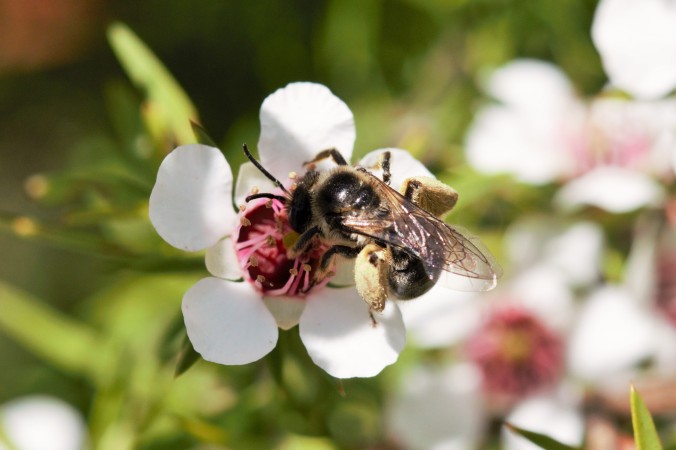Posted by Anna Frances Probert @AFProbert
I have recently had the opportunity to go and spend the day with school children as part of science engagement programmes. On one occasion, it was down to the wetlands with the local primary school where myself and Jamie Stavert went out with the students looking at the local biodiversity, armed with a few nets, an aspirator and some pottles. More recently, on another occasion Jamie and I also went down to Palmerston North to spend the day with high school students on the Indigenous Sparks programmeTM, organised through the PTC trust. The aim of the programme is to engage young Māori students with the sciences, who are traditionally underrepresented in the STEM subjects, and particularly so at the post-graduate level.

Looking at the local fresh water invertebrate community
On both occasions, it was incredibly obvious that the hands-on approach of getting students out of the classroom and into the field sparks that curiosity by giving students something tangible to engage with. Arm a kid with a net and challenge them to catch an invertebrate and chances are you’ll have trove of pottles filled with various specimens in no time. Make students sit down and listen to you talk for 15 minutes about science and chances are you’ll have bored them all to death.

A butterfly chase (1869) Source: Wiki Commons
Unfortunately, for many schools, funding cuts and a general lack of resources mean that schools are having to drop field trips. This isn’t good news for inspiring the next generation of scientists. Although there are many amazing scientific experiments that can be conducted by anyone, anywhere (see Nanogirl’s 100 days Project for some neat ideas), it would be great to see more science-engagement for schools from universities.
There are already some amazing people involved with science engagement initiatives with schools at a local and national scale. However, I’m sure there are many other people who could get involved. Plus, it’s really fun and gets you out the office for the day. The only downside is that it makes you realise how old you are.
The PTC trust is a not-for-profit organisation that relies on the support from tertiary institutes/academics/students to further their Indigenous Sparks™ programme across schools in New Zealand. Please contact them if you are interested in getting involved (ptctrustinfo@gmail.com).
Anna Probert is a PhD student in the Centre for Biodiversity & Biosecurity, School of Biological Sciences, University of Auckland. She is using ants as a model to assess the risk posed by exotic invertebrates to native ecosystems. She is supervised by Margaret Stanley, Jacqueline Beggs, and Darren Ward.
















